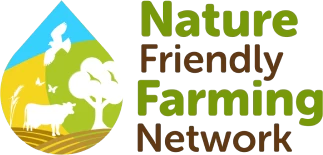David is a fourth generation farmer based in the Pewsey Vale, farming in partnership with his wife and parents. As well as combinable cropping on around 900 ha there is a 260 cow dairy and a beef enterprise utilising the farm's chalk downland habitat.
What does your farm do and what does it provide in the UK?
We have arable with wheat, winter barley and spring barley, winter oats, spring beans, and oilseed rape. We also have 280 dairy cows to provide milk for a supermarket, and 80 beef cattle which provide grazing for the grassland. Environment schemes are an important part of farm income with 8% of the arable land area used for wildlife habitats.
Tell us why you are a nature-friendly farmer?
We are a nature-friendly family. A lot of what we see here was started by my father’s interest in conservation. When we began Countryside Stewardship, I became passionate about insect and butterfly conservation. All farmers should know and understand the ecology of their farm. There is a place to find a sweet spot between production and wildlife.
What nature-friendly farming practices have you introduced on your farm?
It’s important to understand how to farm positively for nature. You need to understand the importance of rotational cropping and use inputs like manure with best practice. We’ve adopted minimum tillage. Our ruminants utilise grazing pastures, which means more diverse landscapes and less imported feed. We’ve done lots of tree planting, hedge planting, and field margins. We manage the scrub on chalk escarpment to suit rare insect species.
How do nature-friendly farming methods make you more resilient to climate change?
We’re trying to reduce fuel use, and minimum tillage is a step forward. Satellite navigation and tailored inputs make us more efficient. We’ve got a solar array so some electricity is renewably sourced, and we use heat recovery systems. I’m thinking about how I could introduce silvopasture and agroforestry practices which could promote biodiversity and mitigate climate change.
What benefits in nature have you seen on your farm?
Our bird and butterfly surveys show positive trends. Our hedges look fantastic and we’re trying to improve our field margin diversity. Everyone comments on seeing the barn owls, and the wild bird covers are successful as habitats for yellowhammers and other birds. I prioritise butterfly conservation on the farm and we have hares everywhere.
How has the Coronavirus pandemic impacted your business and distribution?
We’ve been very lucky for our business. We’ve had to pull back on our dairy production because of supply chain issues but this has been manageable. Like many people, we’ve been affected on a personal level which wasn’t nice. We’re having to social distance the farming team, but it seems to be working as everyone sticks to a dedicated farm vehicle.
Are you involved in any initiatives that support the local community or people?
I’ve offered up ground for additional allotments and opened up the farm for the public to walk around. I get involved in the community too, I’m on the Parish Council and work with the Pewsey Downs Farmers cluster group with 30 farmers working together.
What would you like to say to people at this time about the role of UK farms to protect nature?
Farming manages over 70% UK land and regrettably there are some trends in nature we are not proud of. It’s very important that we can find that sweet spot: a balance of climate mitigation, nature recovery, and feeding people. That’s what I’m always focusing on.
What would you like to say to people at this time about the role of UK farms to provide food for people in the UK?


